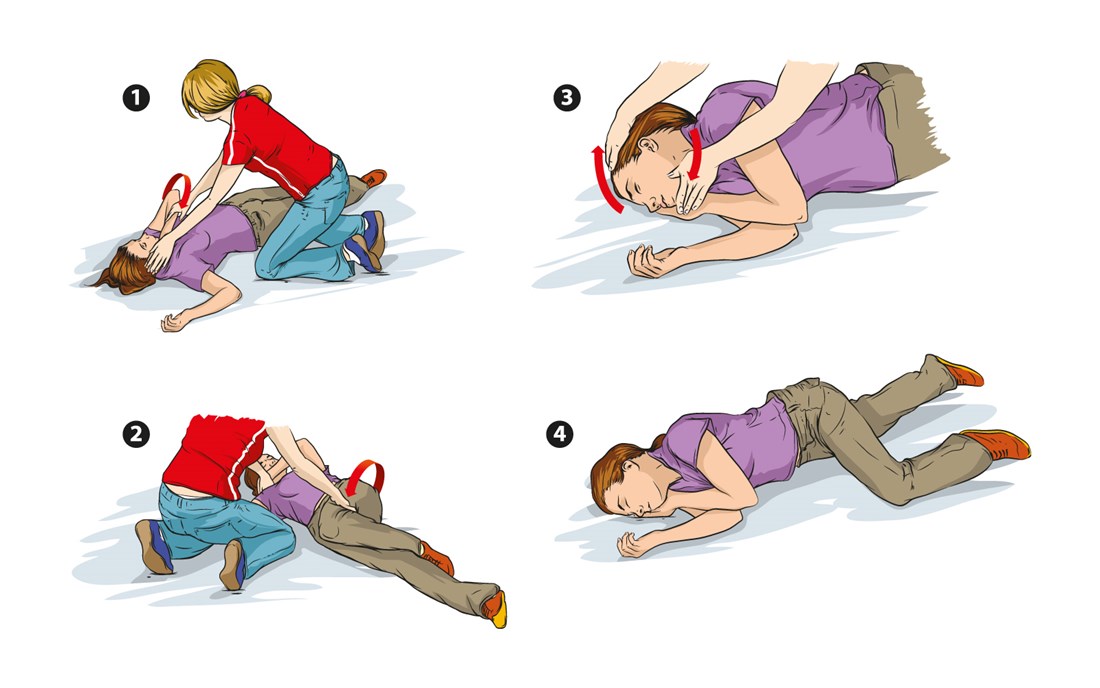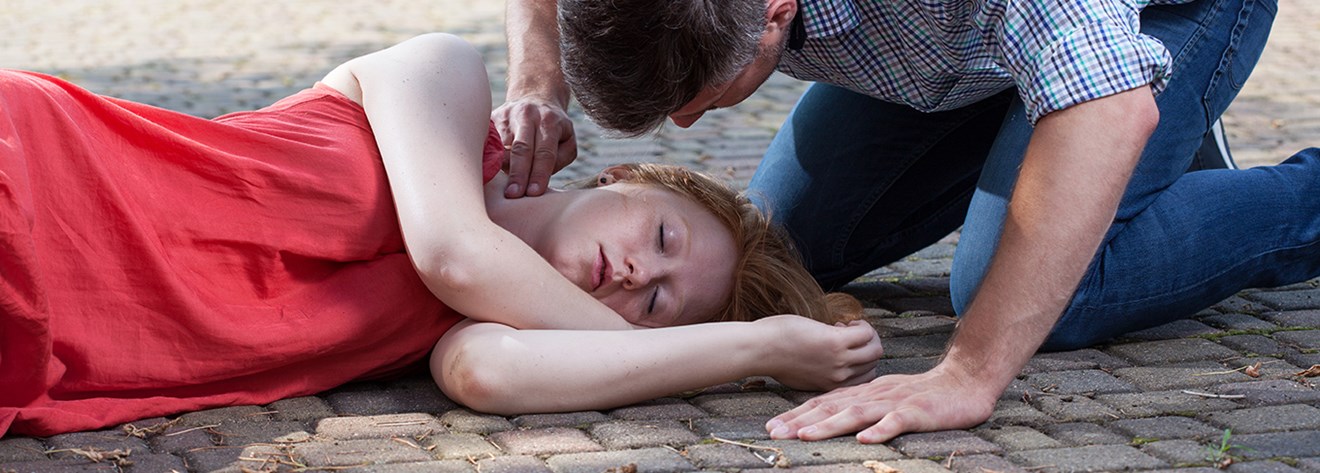First Aid For Seizures
For convulsive epileptic seizures also known as tonic clonic, clonic or grand mal seizures.
A convulsive seizure may appear dramatic and frightening to an observer. It is important to remember that the person affected normally feels no pain during the seizure, and they will probably have no memory of it afterwards.
If you see a tonic-clonic seizure, keep calm and prevent others from acting rashly. You cannot stop a seizure once it has started. Let the seizure run its course and be ready to provide reassurance afterwards.
What to do during the seizure
- Note the time so that you know the duration of the seizure
- Clear any harmful objects around the person to prevent injury
- Cushion the head if possible (e.g. with a rolled up jacket).
- Loosen tight neckwear if possible.
- Remove glasses if worn
What not to do during the seizure
- DO NOT move the person while the seizure is in progress, unless he/she is in immediate danger (e.g. in a busy road, at the top of a flight of stairs, at the edge of water, or near a fire).
- DO NOT restrict movements.
- DO NOT attempt to lift the person up.
- DO NOT force anything between the teeth. Contrary to popular belief, a person having a seizure is incapable of swallowing their tongue so you can breathe easy in the knowledge that you do not have to stick your fingers or other objects into the mouth of someone in this condition. Doing so risks serious injury to your fingers or breaking their teeth.
- DO NOT try to give anything by mouth whether water, pills, or food until fully alert.

What to do after the seizure
- As soon as the convulsions subside, turn the person onto his/her side into the recovery position to aid breathing.
- Clear any frothy saliva from the mouth and check the airway.
- After the seizure, the person should be placed on her left side in the RECOVERY POSITION. Keep in mind there is a small risk of post-seizure vomiting, before the person is fully alert. Therefore, the person's head should be turned so that any vomit will drain out of the mouth without being inhaled. Stay with the person until she recovers (5 to 20 minutes).
- DO NOT interfere unnecessarily with the person in the period immediately after the seizure. Let them recover in peace and quiet, but stay with them until any confusion has passed.
- Reassure the person during any period of confusion which may follow by being sensitive and supportive
- Throughout the seizure respect the person's privacy and ask others to do the same; discourage unnecessary onlookers.
When to get medical help
You should call and ambulance if:
- The stiffening and jerking phase of a tonic-clonic seizure lasts longer than 5 minutes.
- One major seizure follows another without full recovery in between.
- The person hits their head during the seizure and there is no sign of consciousness being regained within 10 minutes of the convulsions ceasing. Unconsciousness could be due to concussion. (Remember that some people sleep after a seizure. A sleeping person responds when gently shaken; an unconscious person does not).
- There is an injury you cannot deal with (e.g. if you cannot stop bleeding).
- The person is very confused and disorientated for a long period after the seizure.
- The seizure has occurred in water and it is suspected that water has been inhaled.
If you call an ambulance give a full description of what has happened, for how long the seizure has lasted and any injuries so that the paramedics can give the call suitable priority and provide appropriate care.
How to help other types of seizure
ABSENCES ('petit mal') - No action needs to be taken; absences are usually very brief and often pass unnoticed. If you witness an absence seizure, stay with the person for a while to make sure that no injury has been sustained or that further seizures do not occur.
COMPLEX PARTIAL SEIZURES ('psychomotor' or 'temporal lobe seizures') - Some people have seizures which put them temporarily into a state of altered consciousness. Behaviour may seem inappropriate (e.g. lip-smacking clutching at clothing, or wandering around purposelessly with a glazed expression). During this type of seizure, stay with the person and allow the seizure to run its natural course. Gently guide the person away from danger and offer reassurance afterwards.
How else can I help?
People with epilepsy often do not know what happens to them during a seizure due to loss of consciousness or awareness. People who have seen the seizure can provide vital information to a GP or Neurologist. Take a careful note of what happened such as how long the seizure lasted, what made you notice the seizure was happening, did they have difficulty breathing or cry out during the seizure. If you had reason to call an ambulance you can tell this information to the paramedic who answers your call.
